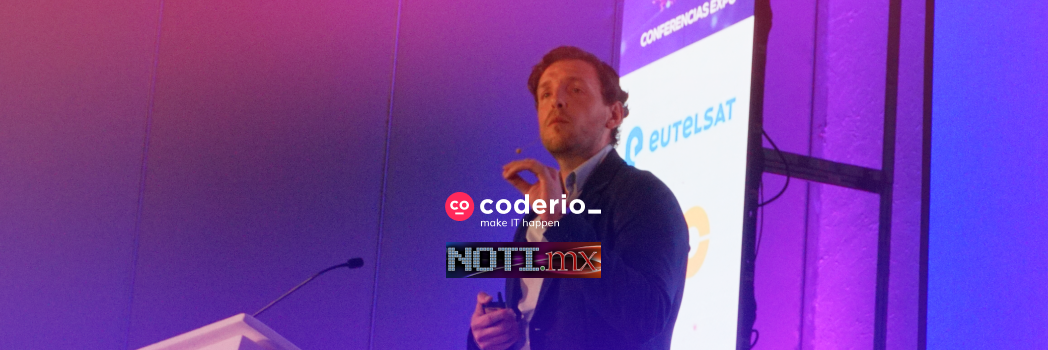By Javier López Ramos, Chief Operating Officer at Coderio with more than 15 years of experience in Project Management. Coderio.
“We are going to dissolve the PMO. The Direction wants to take an agile course in the management of the company’s projects, so we are going to change the structure and hire Scrum Masters ”.
I heard this phrase about a year ago and it left me wondering: why did the management of that company understand that having a project office was at the expense of managing requirements in an agile way? And, in turn: why did they believe that a Scrum Master would be the “agile” replacement for a PM?
Project Manager: an obstacle to agile management?
My area of professional development has always been IT and the last 15 years I have focused specifically on the field of project coordination, where I worked on different models and frameworks (agile, classic, hybrid, etc.)
I remember in that conversation having used some of these arguments, but the answer was overwhelming: “We put more POs and, if necessary, an Agile Coach”, which reduced the question to a strange equation: PM = SM + PO + Agile Coach (at x%).
That episode transported me to about 7 or 8 years earlier, the first time I noticed the contrast between “agility” and the figure of the Project Manager. I immediately wondered what could be the reasons to believe that the PM figure has no place in an Agile universe.
Is this role destined to disappear? This job that I’m so passionate about even today, is it history?
Bussiness Darwinism
One of the first answers I found was that the Latin American market has a certain tendency for the new to “cannibalize” the old. As if evolution inevitably forces that what has just born must eliminate the above, rejecting all possible coexistence.
Another not minor point is how the word “agile” rings in the minds of top management. It is far from the concept of agility that we all know, but rather it is reduced to a question of “improvement of the time to market” and lower costs (“faster”).
I believe that it is due to a matter of interpretation (or bad translation, would say Cliff Berg, author of “Agile 2: the next iteration”). The Agile manifesto states that the team must be trusted and that they must be self-organized. But never declares “without any supervision or verification”, or point out the impossibility of periodically validating that the project is on the expected way. In my opinion, Agile 2 comes to correct this fundamentalism.
Management vs. agility
It is clear that, conceptually, the classic project management methodology is not directly related to the precepts of agility. From its foundations, Agile tries to differentiate itself from the PMI methodology.
But I don’t think that “agile” means necessarily to eliminate the Project Manager and accuse him of being the mother of all current and past problems. I am convinced that a good PM can only be a positive addition to any team.
Jorge Sapirstein, Regional Product Owner of Digital Innovation at Tsoft, has his vision in this regard: “Over time, projects have been changing in their conception and evolution, and the techniques have been adapted to that transformation, but it was always important the need for team leadership focused on the results and expectations of the Stakeholders”. And adds: “Those that are mutating are the skills of the leaders, which increasingly require a focus on the customer experience, an empathic and less structured approach, with a flexible perspective guided by the realization of objectives and management” .
As I mentioned before, no figure could replace the PM hand in hand. The Scrum Master has a reactive function, is at the service of the team, understood as the cell that is producing the deliverable. Instead, the Project Manager has an active and proactive role; and their mantle of influence goes beyond the squad that is producing the solution.
In the case of the PO, it is a role whose primary function is to be “the voice of the customer” within the project. He is the owner of the backlog and, in a way, the highest authority when it comes to referring to the product.
In this regard, Diego Formulari, Digital Transformation Director at Assist Card, points out that “the management methodology is a bridge to results, a tool that allows containing and even predicting the variables that will make our project achieve its objective and can capitalize the benefits that drive it”. However, it also clarifies that “practice must evolve towards a more flexible model, because the context presents us with experimentation as the protagonist”.
Shuffle and deal again
Now, what happens when we do not have a product or competition problem between two deliverables or something that is beyond the team’s ability? Who climbs to management and how? Here are some of the questions that big companies should ask themselves before making hasty decisions:
-Who is evaluating the risks inherent to the project during its execution?
-Who is observing what happens with all the environmental factors external to the project and their impact? Who is responsible for the scope?
-Who is attentive to the influence that third parties (not necessarily the client) may exert on the project? Decisions that are made in other areas and can put progress in check.
The future of PM
I think that the Project Manager should not reinvent itself, but it should adapt. Today the PM should not be the one who looks at the project plan alone while wondering what tool apply to gain a lost week.
“Project management as a profession and discipline -says Nicolás Donadio, Program & Project Manager at IT Desarrollos SRL- is growing: the different frameworks and methodologies will become tools, where each user will be able to choose the most convenient one, while the routine tasks will be automated. “
For the colleague, project management professionals must evolve towards a vision that combines soft skills related to leadership and team building with a business approach, which allows us to be attentive to both the interior of the team and the environment: “They are no longer so focused on the ‘output’ of the project but on the ‘outcome’, on how value is generated and how it impacts, not only on business but also on society”.
Donadio assures that the PMs will be the catalysts for these transformations, supporting and guiding those who “do” the projects and transform ideas into reality, promoting the adoption of a flexible, open and innovative culture.
Today the PM must be the figure that shields the team so that it can fully exploit its best qualities. The interface that can evaluate all internal and external aspects of the project, and ensure a safe framework and efficient communication for senior management.
In the same sense, Formulari considers that Project Management is at a turning point: “An instance of transition from professionals with a very high degree of specialty to more holistic professionals, who have the ability to integrate different competencies and who contribute great flows of emotional intelligence”.
“Now comes a new era -he highlighted-, the era of convergence in which each data, each technology and each process must work precisely and the PM is the one who can orchestrate those parts so that the whole system works in harmony, adding a differential value to companies”.
More than ever, the PM must make use of his management capacities to be “more manager than project”. Develop their soft skills to achieve a solid connection with the new teams and their different work methodologies, by and for them, from an even more active place.
Honestly, I believe that it is not yet time to consider him dead.
By Javier López Ramos, Chief Operating Officer at Coderio.



